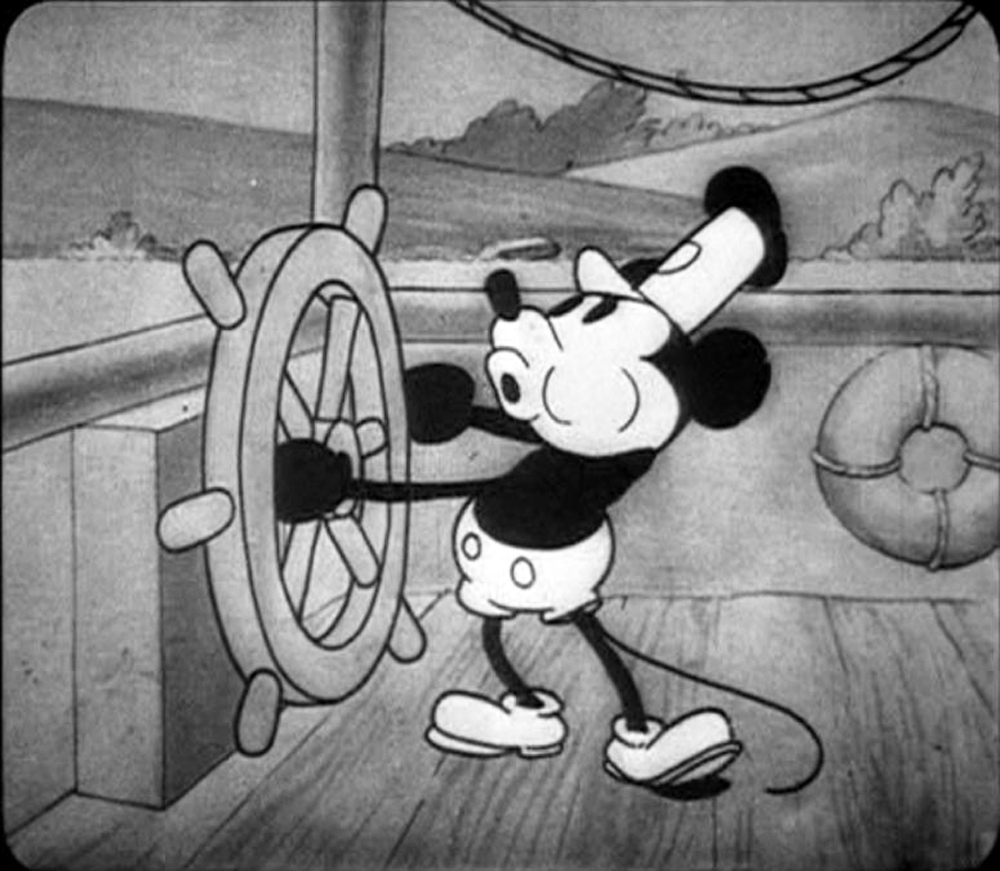Winnie the Pooh slaughtering innocents, Bambi getting revenge on the hunters who took her mother away, and now Mickey Mouse gearing up to commit all kinds of atrocities. These shocking scenarios are all thanks to the public domain. The public domain is the collection of formerly copyrighted intellectual property that can be freely used by the public, now that the copyright has expired.
The public domain has existed in the United States since 1789, but has only recently been making headlines with the release of more contemporary projects into the public domain. Some notable new arrivals include Winnie the Pooh, Bambi, and Pinnochio. The most famous of these recent public domain releases is Walt Disney’s “Steamboat Willie” cartoon, otherwise known as the first appearance of Mickey Mouse.
A recent trend since the release of these iconic children’s characters has been to make horror properties based on them. This is best seen in Jagged Edge Productions’ “Winnie the Pooh: Blood and Honey” franchise and their recently announced project “The Twisted Childhood Cinematic Universe.” These productions seems to be to capitalize on the buzz around these characters being released into the public domain by very quickly making a horror movie based on the property. This strategy seems to work, with “Blood and Honey” bringing in 5.2 million dollars in worldwide box office sales on a 50,000 dollar budget. Shortly after the release of “Blood and Honey”, the same production company announced an entire cinematic universe with properties based on Cinderella, Bambi, and Peter Pan
These movies are, to put it gently, not very good. The films are a desperate attempt at trying to shock the audience all the while having nothing of substance to say. In addition, “Blood and Honey” also features many sexual situations alongside excessive gore. While sexual situations and gore are part of the horror genre’s DNA, the content featured in “Blood and Honey” comes across like a 12 year old’s attempt to be cool and edgy more than a terrifying horror movie. In addition, the implication of adding explicit sexual references and depictions to a franchise based on children’s media isn’t inherently wrong if it serves a narrative purpose, and the project is explicitly labeled as not for children. The content featured in “Blood and Honey” serves no purpose other than shock value.
But “Blood and Honey” does not represent the entirety of the public domain whatsoever. Online, many sentiments have been shared that the public domain doesn’t do any good, or that perhaps the system ought to be done away with entirely. These opinions seem to come in response to less than stellar projects like “Blood and Honey”. But the public domain, by its nature, lends itself to a pantheon of creativity that also includes horror. Many wonderful projects have been made thanks to the public domain. Public domain is what gave life to classics like “Snow White,” along with a Pinocchio-inspired video game “Lies of P,” as well as “Circe” which takes inspiration from Greek mythology as well as Homer’s “The Odyssey”. The main difference between these projects is that they come from a place of genuine inspiration. While “Blood and Honey” reads like a generic slasher with Winnie the Pooh retrofitted onto it, these projects were designed with the properties and creative ideas in mind. “Lies of P” takes the idea of Pinocchio as the crossroads between a puppet and a real boy and incorporates it into the gameplay, the more lies you tell, the more mechanical abilities you gain as you become more puppet-like. “Circe” takes an oft-overlooked character in Greek Mythology and places the reader in her shoes, while watching familiar tales.
“Blood and Honey” also does not begin to represent the full scope of public domain horror. For example, Steven LaMorte, director of the hilarious parody horror-comedy “The Mean One” is working on a horror-comedy based on the Steamboat Willie cartoon. LaMorte has a genuine passion for horror and filmmaking as a whole that shines through all of his work. “Start with a movie or an idea that you like. And if it belongs with an IP-driven [project]. Then we’ll get there. But first you need a story that you want to tell” LaMorte said when asked about the development of his Steamboat Willie project. LaMorte had started developing his Steamboat Willie project before the rights were officially released, starting with the concept of a horror film based on a boat. “I said, well, I really wanted to make a boat movie because once the boat takes off. There’s nowhere to go, right?” LaMorte said. It was only once this concept had been settled upon that LaMorte discovered that Steamboat Willie was entering the public domain, and the seeds for the project had been sown. LaMorte’s project is another horror-comedy and involves a group of passengers on a late-night boat right being hunted by a murderous mouse. “I wanted it to be another horror film that doubled down on everything. More comedy, more kills, more of everything” LaMorte said.
LaMorte and other directors like him represent the fundamental truth that not all public domain horror projects should be lumped in with one another. LaMorte’s commitment to making hilarious but appropriately scary horror films should be commended in the face of an ever-growing horror film industry.
Ultimately, the public domain is one of the most fascinating creative goldmines that we have access to, and although there is bound to be a few “Blood and Honey”s, there is an equal chance of a “Snow White”, a “Circe”, or a “The Mean One”. So please, don’t throw the public domain baby out with the “Winnie the Pooh: Blood and Honey” bathwater.









